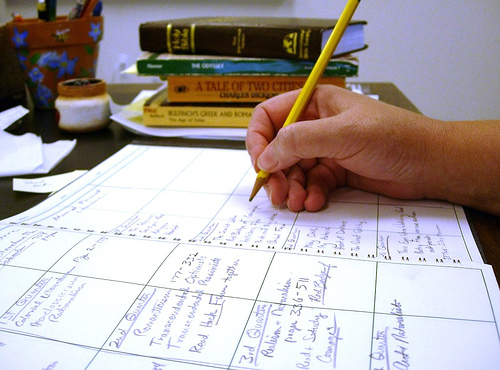Lesson plan is a teacher’s comprehensive description of the course of instruction for an individual lesson. There’s no one method in making a lesson plan but lesson plans commonly contain some or all of these elements and in this specific order:
Components of Lesson Plans
the title of the lesson
the amount of time required to complete the lesson
a list of required materials
a list of objectives. These may be presented as behavioral objectives (what the student is expected to be able to do upon finishing the lesson) or as knowledge objectives (what the student is expected to know upon completion of the lesson.
the set or lead-in to the lesson. This is designed to concentrate students on the skill or concept about to be taught. Common sets include showing pictures or models, asking leading questions, or reviewing previously taught lessons.
the instructional component. This presents the sequence of events which will take place as the lesson is delivered. It includes the instructional input—what the teacher plans to do and say, and guided practice—a chance for students to try new skills or express new ideas with the modeling and guidance of the teacher.
independent practice. This component allows students to practice the skill or extend the knowledge on their own.
the summary. This is a chance for the teacher to sum up the discussion and for the students to pose unanswered questions.
evaluation. Some, but not all, lessons have an evaluative component where the teacher can assess for mastery of the instructed skills or concepts. This may take the form of a set of questions to be answered or a set of instructions to be followed. The evaluation may be formative; that is to say, used to guide subsequent learning, or summative; that is to say, used to identify a grade or other achievement criterion.
analysis. Often not part of a lesson plan, this component allows the teacher to reflect on the lesson and answer questions such as what went well, what needs improving, and how students reacted to the lesson.
Unit plans follow much the same format, but are planned to cover an entire unit of work, which may be delivered over several days or weeks.
In today’s constructivist teaching style, the individual lesson plan is often unsuitable. Specific objectives and timelines may be included in the unit plan, but lesson plans are more fluid as they cater to student needs and learning styles. As students are asked to get involved in problem or inquiry learning, rigid lesson planning with title, behavioral objectives, and specific outcomes within certain time constraints often no longer fit within modern effective pedagogy. Today, formal lesson plans are often asked only of student teachers, who must be demonstrably familiar with the components of a lesson, or teachers new to the field, who have not yet internalized the flow of a lesson.
